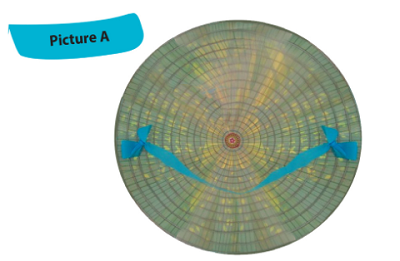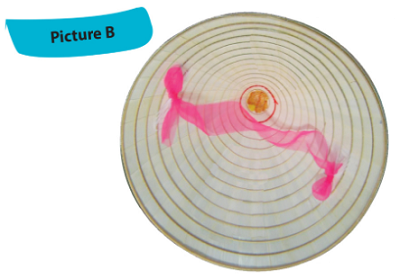Bài học cùng chủ đề
Báo cáo học liệu
Mua học liệu
Mua học liệu:
-
Số dư ví của bạn: 0 coin - 0 Xu
-
Nếu mua học liệu này bạn sẽ bị trừ: 2 coin\Xu
Để nhận Coin\Xu, bạn có thể:

Luyện tập SVIP
Work in pairs. One looks at Picture A, and the other looks at Oicture B on page 15. Ask other qusetions to find out the similarities and differences between your pictures.



Mi visited Tay Ho village in Hue last month. She has decided to present what she knows about this place to the class.
Read what she has prepared and match the titles with the paragraphs.
|
|
A. When you think about the conical hat, the first thing you think of is the region of Hue. Conical hat making has been a traditional craft there for hundreds of years, and there are many craft villages like Da Le, Phu Cam, and Doc So. However, Tay Ho is the most famous because it is the birthplace of the conical hat in Hue. It is a village on the bank of the Nhu Y River, 12 km from Hue City. B. A conical hat may look simple, but artisans have to follow 15 stages, from going to the forest to collect leaves to ironing the leaves, making the frames, ect. Hue's conical hats always have two layers of leaves. Craftsmen must be skilful to make the two layers very thin. What is special is that they then add poems and paintings of Hue between the two layers, creating the famous bai tho or poetic conical hats. C. Conical hat making in the village has been passed down from generation to generation because everybody, young or old, can take part in the process. It is a well-known handicraft, not only in Viet Nam, but all around the world. |
(Kéo thả hoặc click vào để điền)
A. Location and history of conical hat making lillage
When you think about the conical hat, the first thing you think of is the region of Hue. Conical hat making has been a traditional craft there for hundreds of years, and there are many craft villages like Da Le, Phu Cam, and Doc So. However, Tay Ho is the most famous because it is the birthplace of the conical hat in Hue. It is a village on the bank of the Nhu Y River, 12 km from Hue City.
B. How the conical hat is made
A conical hat may look simple, but artisans have to follow 15 stages, from going to the forest to collect leaves to ironing the leaves, making the frames, ect. Hue's conical hats always have two layers of leaves. Craftsmen must be skilful to make the two layers very thin. What is special is that they then add poems and paintings of Hue between the two layers, creating the famous bai tho or poetic conical hats.
C. Present status of the craft
Conical hat making in the village has been passed down from generation to generation because everybody, young or old, can take part in the process. It is a well-known handicraft, not only in Viet Nam, but all around the world.
Read the text again and answer the questions.
1. Why is Tay Ho the most well-known conical hat making village?
2. How far is it from Tay Ho to Hue City?
3. What is the first stage of conical hat making?
A. Location and history of conical hat making lillage
When you think about the conical hat, the first thing you think of is the region of Hue. Conical hat making has been a traditional craft there for hundreds of years, and there are many craft villages like Da Le, Phu Cam, and Doc So. However, Tay Ho is the most famous because it is the birthplace of the conical hat in Hue. It is a village on the bank of the Nhu Y River, 12 km from Hue City.
B. How the conical hat is made
A conical hat may look simple, but artisans have to follow 15 stages, from going to the forest to collect leaves to ironing the leaves, making the frames, ect. Hue's conical hats always have two layers of leaves. Craftsmen must be skilful to make the two layers very thin. What is special is that they then add poems and paintings of Hue between the two layers, creating the famous bai tho or poetic conical hats.
C. Present status of the craft
Conical hat making in the village has been passed down from generation to generation because everybody, young or old, can take part in the process. It is a well-known handicraft, not only in Viet Nam, but all around the world.
Read the text again and answer the questions.
1. What is special about the hat layers?
2. What is special about the bai tho conical hat?
3. Who can make conical hats?
A. Location and history of conical hat making lillage
When you think about the conical hat, the first thing you think of is the region of Hue. Conical hat making has been a traditional craft there for hundreds of years, and there are many craft villages like Da Le, Phu Cam, and Doc So. However, Tay Ho is the most famous because it is the birthplace of the conical hat in Hue. It is a village on the bank of the Nhu Y River, 12 km from Hue City.
B. How the conical hat is made
A conical hat may look simple, but artisans have to follow 15 stages, from going to the forest to collect leaves to ironing the leaves, making the frames, ect. Hue's conical hats always have two layers of leaves. Craftsmen must be skilful to make the two layers very thin. What is special is that they then add poems and paintings of Hue between the two layers, creating the famous bai tho or poetic conical hats.
C. Present status of the craft
Conical hat making in the village has been passed down from generation to generation because everybody, young or old, can take part in the process. It is a well-known handicraft, not only in Viet Nam, but all around the world.
Read the following ideas. Are they about the benefits of traditional crafts (B) or challenges that artisans may face (C). Write B or C.
| 1. providing employment | |
| 2. losing authenticity | |
| 3. providing additional income | |
| 4. relying too much on tourism | |
| 5. treating waste and pollution | |
| 6. preserving cultural heritage |
Imagine that your group is responsible for promoting traditional crafts in your area. Propose an action plan to deal with the challenges.

Bạn có thể đăng câu hỏi về bài học này ở đây

